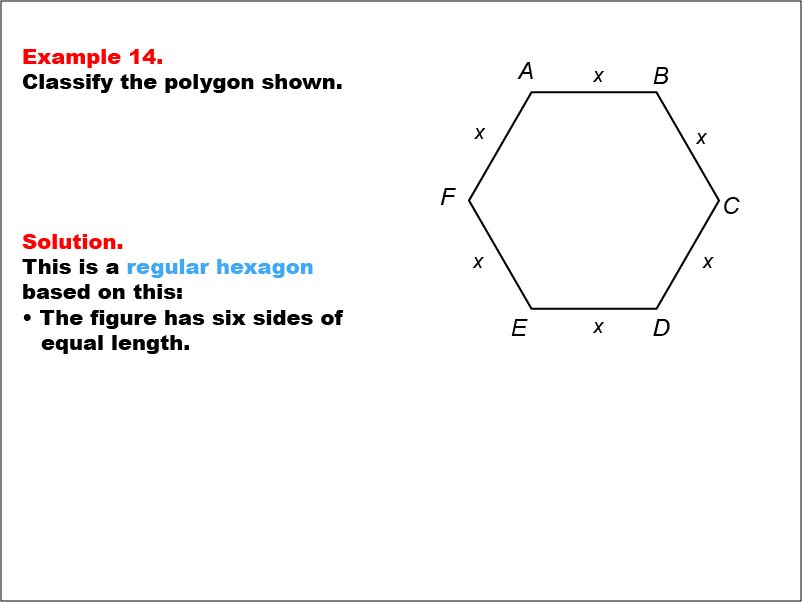
Display Title
Math Example--Polygons--Polygon Classification: Example 14
Display Title
Math Example--Polygons--Polygon Classification: Example 14

Topic
Polygons
Description
This example presents a hexagon with all sides labeled as x, indicating equal length. It illustrates another instance of a regular hexagon, reinforcing the concept that a regular polygon has all sides of equal length, even when represented by a variable.
Polygon classification is a fundamental topic in geometry that helps students understand the properties and characteristics of different shapes. This collection of examples provides a comprehensive overview of various hexagon types, allowing students to distinguish between regular and irregular polygons based on their side lengths and angle measures.
Exposure to multiple worked-out examples is crucial for students to develop a thorough understanding of polygon classification. Each example offers a unique perspective, enabling students to recognize patterns and apply classification rules across different scenarios. This approach enhances their ability to analyze and categorize polygons effectively.
Teacher's Script: Take a look at this hexagon, everyone. What do you notice about the side labels? How does using a variable like x help us understand that all sides are equal? Let's discuss why this representation still indicates a regular hexagon and how it relates to our previous example.
For a complete collection of math examples related to Polygons click on this link: Math Examples: Polygon Classification Collection.
| Common Core Standards | CCSS.MATH.CONTENT.5.G.B.3, CCSS.MATH.CONTENT.7.G.B.6 |
|---|---|
| Grade Range | 6 - 8 |
| Curriculum Nodes |
Geometry • Polygons • Definition of a Polygon |
| Copyright Year | 2013 |
| Keywords | polygons, classification |